The flexographic printing plate can be described as the heart of flexographic printing, as it has a decisive influence on a label printer’s print results and production efficiency. There are well over 40 different flexographic printing plates on the market for label printers, but all of them vary in terms of their properties, print behaviour and manufacturing process.
Consequently, label printers often face the exceptionally difficult task of choosing a suitable printing plate. With this in mind, Gallus spent several weeks investigating and comparing the printing features of all the top-name flexographic printing plates. The results and evaluations ranged from exceptional to unusable. Even if there is no perfect flexographic printing plate for all areas, it was possible to identify a small number of top plates for label printers.
The basics
Most flexographic printing plates are now made of photopolymer; plates made of rubber are much less common. The washing out processes for photopolymer printing plates range from those that use solvents to water and thermal development. However, the majority of photopolymer flexographic printing plates are washed out with solvents or water in the following steps (1-6):
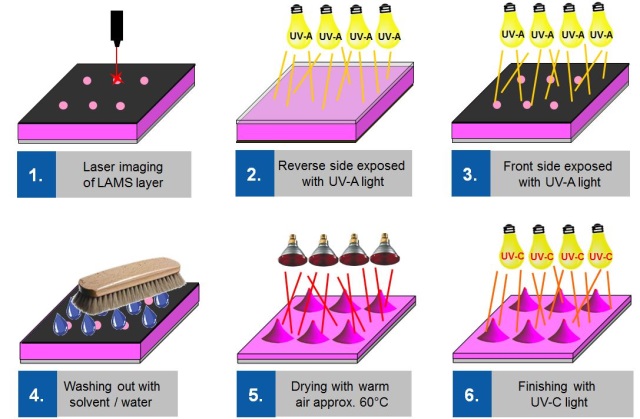
Flat top dots
There is currently a trend for flat top dots technology in the printing plate industry. These printing plates have a dot that is flat at the top rather than rounded, which leads to more constant and accurate print results.
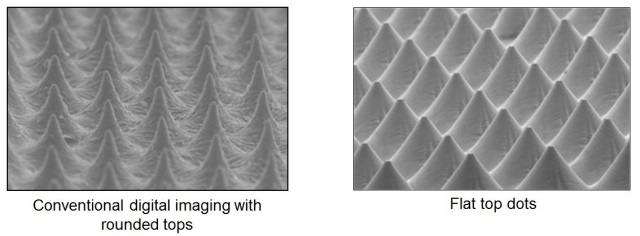
“Conventional” digitally exposed photopolymer flexographic printing plates generally have a rounded printing point. This is because of the presence of oxygen that has a negative effect on the polymerization of the photopolymer during the UV exposure process and thus causes the dots to shrink.
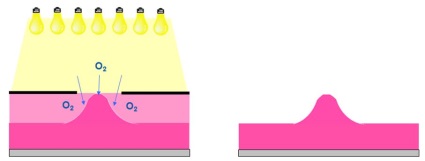
Oxygen disrupts polymerisation of the photopolymer, resulting in dots with rounded tops.

Screening off the oxygen allows ideal polymerisation, resulting in flat top dots.
There are a number of ways to remove the disruptive oxygen from the exposure process. Listed below are four options that are used by printing plate manufacturers.
Option 1: Kodak (Flexcel NX)
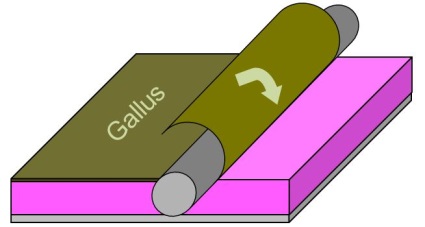
The laminated, laser imaged film prevents direct contact with oxygen during the UV-A exposure process.
Option 2: MacDermid (Lux)
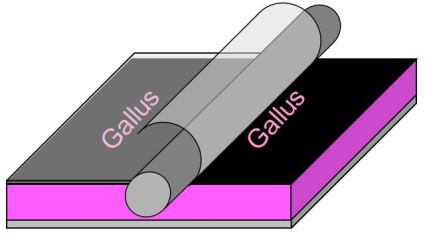
A membrane (thin film) is laminated on to the LAMS and prevents direct contact with oxygen during the UV-A exposure process.
Option 3: Flint (NExT)
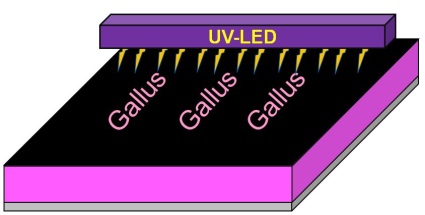
Pre-exposure with UV-LED removes the oxygen while simultaneously polymerising the upper plate layer.
Option 4: DuPont (Digiflow)
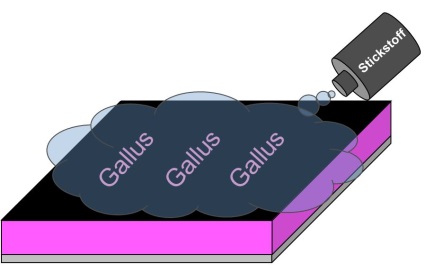
During the conventional UV-A exposure process, the plate is flooded with an inert gas (nitrogen), which displaces the oxygen.
Which aspects determine the quality of a flexographic printing plate?
All printers have their own specific requirements for flexographic printing plates. While one might be focused on a very rapid production time, another may be concerned solely with printing quality. Others might attach a lot of importance to ecological aspects.
Generally speaking, prepress and plate processing have a considerable influence on the print result. However, the most influential factor is the plate material, which is predetermined and cannot be altered by the user.
During printing tests in Gallus’ plants, flexographic printing plates made by the top-name manufacturers were printed, examined and compared under identical conditions. These tests revealed huge differences in the print results.
If printing quality is the sole consideration, there are several factors that can determine a good or bad type of printing plate. Print shops searching for the plate that will deliver the best printing result should use print tests to investigate and evaluate the following features at the very least:

Table 1 for print tests
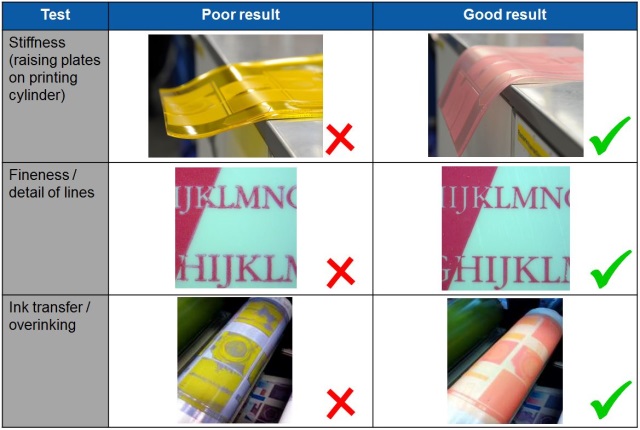
Table 2 for print tests

Table 3 for print tests
Summary:
Selecting the right type of flexographic printing plate is incredibly important for printers and has a crucial influence on printing quality and production efficiency. When assessing a printing plate, it’s a good idea to carry out comparisons and examine the print results closely.
Having conducted comprehensive print tests, Gallus has gained a lot of experience with the various types of flexographic printing plates. This expertise and knowledge is shared and taught in the printing seminars run by Gallus.




Leave a Reply